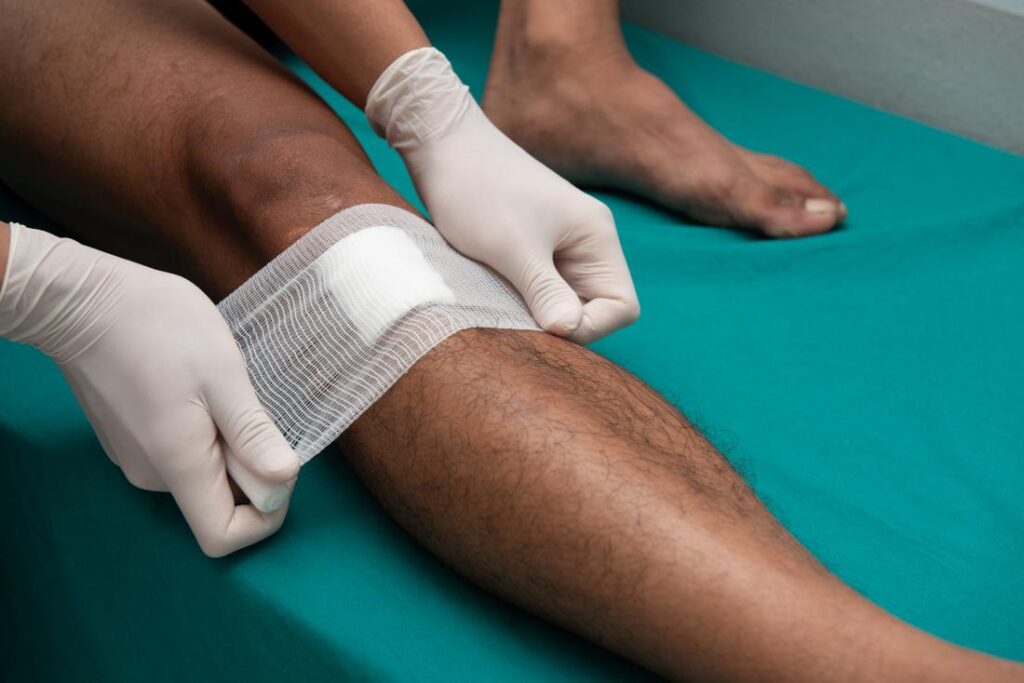- COVID-19 vaccine: Get the latest updates on children’s doses, booster shots and more
Wound Care
Wound Care
For people having injuries that won’t heal, pain, anxiety, and limited mobility can negatively influence their state of living, and in such cases, comprehensive wound care is crucial. Our unique team of doctors, nurses, and therapists give a multi-disciplinary view to wound care and therapy.

Services and Treatments
Tender, raw wounds or ulcers that don’t ease with time need special healing attention. These chronic wounds could cause dilemmas if left unmanaged.
Treatment for wounds
We care for cases with all types of chronic and slow-healing bruises, including ulcers, burns and diseases.
We also strive for hyperbaric oxygen treatment, which can help injuries heal.
Symptoms of chronic wounds
A chronic wound has hindered the remedial process. Signs of chronic wounds include:
Bleeding
Healing wounds will scab over and end bleeding. If a wound still oozes after a few weeks, it could be a chronic bruise.
Discharge
Yellowish, milky or dense liquid oozing from an injury is a sign of infection, which can stop nursing in its tracks.
Fever
If your heat runs higher than 100 degrees Fahrenheit for numerous hours, see a doctor as soon as feasible. A fever could mean a severe dilemma.
Odour
Foul-smelling injuries are liable to have dead tissue that needs to get excluded for healing the wound.
Pain
If pain remains or gets worse weeks after you first remark it, the wound may not be healing.
Swelling
Chronic wounds can appear red and swelling, even after several days or weeks.
Our home-based injury care service includes everything from clinical visits to the patient’s residence. We Assess the nature of the wound, prepare a treatment plan and give the requisite care.
Patient wisdom on how to heal faster, look for signs of infection, prevent weight ulcers, what food to eat to help the body heal gets given. It is to assure the quickest recovery. The team coordinates with the chief physician to update the patient’s improvement and take their medical verdict as & when required.
A wound care visit includes the following:
1. Assessing the wound for adequate healing
Healthy granulation tissue is pink in colour and is a sign of healing. Toxic granulation is dark red in tone, often bleeds on touch, and may mean wound infection. Such wounds should be cultured and handled in the light of microbiological outcomes.
2. Examining the edges of the wound and surrounding skin
Wound edges get defined as diffuse, well-marked or rolled. The pattern or order refers to the area of the lesions within a specific range. Arrangement refers to the position of nearby sores.
3. Checking for signs of infection
Wound and skin infections are the spread and growth of germs, usually bacteria, within the skin or a crack or wound on the epidermis. These infections trigger the body’s immune system and cause infection. Further tissue injury within the skin or wound and hinder the healing manner.
4. Assessing the pain level
An overall assessment of the factors that may impact a patients activity and interpretation of pain and a complete process of expressing pain and its impact on function. An awareness of the limits that may affect nurses assessment and management of pain. Our team members assess the pain level and help you in the quick recovery of the wound.
5. Cleaning the wound
The goal of wound cleaning is to remove ruins and devitalised tissue. Remove redundant or dry crusting on the skin and therefore reduce decay.
6. Changing the dressing
The goal of wound cleaning is to remove ruins and devitalised tissue. Remove redundant or dry crusting on the skin and therefore reduce decay.
7. Assess the overall condition of the patient
A structured physical checkup allows the therapist to obtain a complete appraisal of the patient. Observation/inspection, palpation, impact and auscultation are methods used to collect data.
